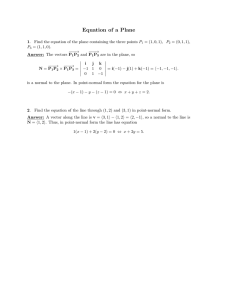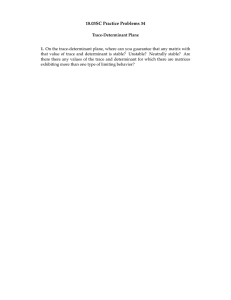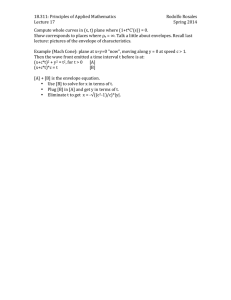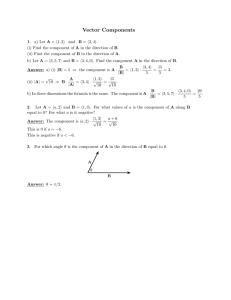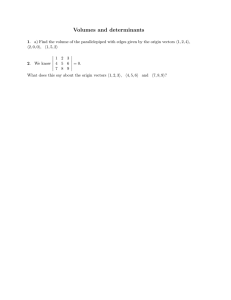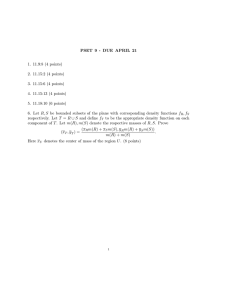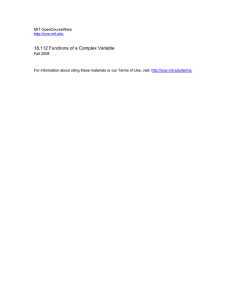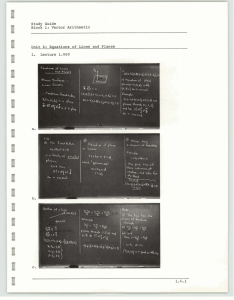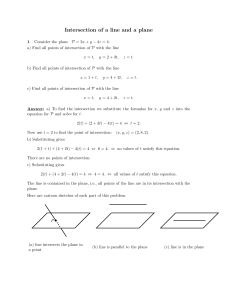Equation of a plane
advertisement
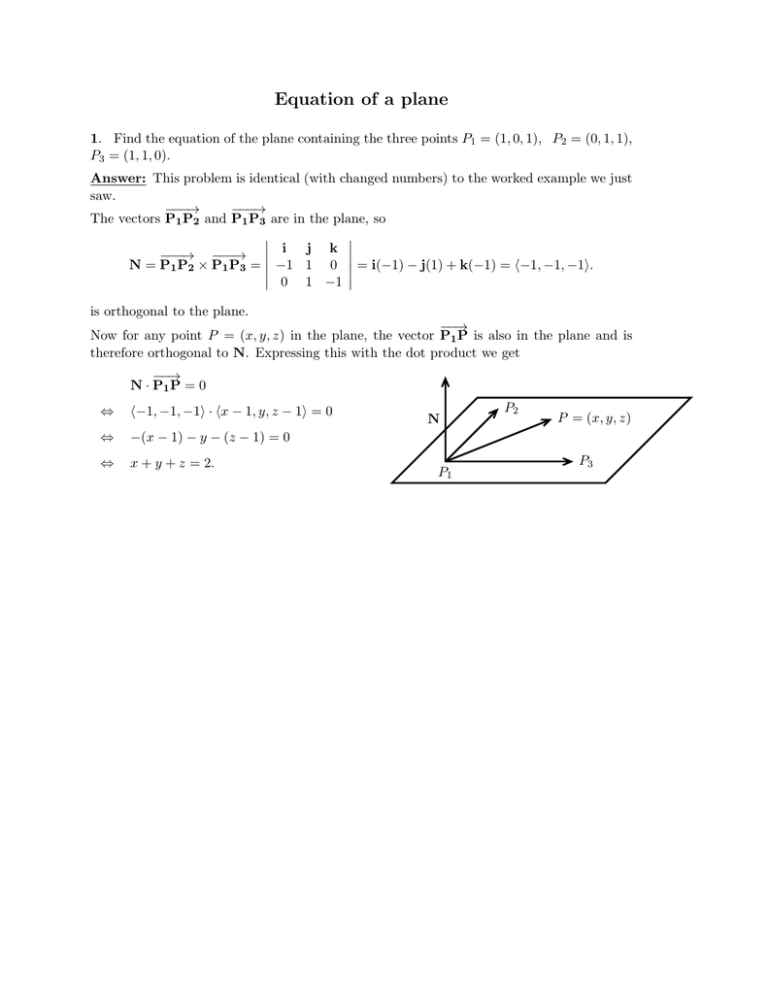
Equation of a plane 1. Find the equation of the plane containing the three points P1 = (1, 0, 1), P2 = (0, 1, 1), P3 = (1, 1, 0). Answer: This problem is identical (with changed numbers) to the worked example we just saw. −−−→ −−−→ The vectors P1 P2 and P1 P3 are in the plane, so � � � i j k � � −−−→ −−−→ �� N = P1 P2 × P1 P3 = � −1 1 0 �� = i(−1) − j(1) + k(−1) = �−1, −1, −1�. � 0 1 −1 � is orthogonal to the plane. −−→ Now for any point P = (x, y, z) in the plane, the vector P1 P is also in the plane and is therefore orthogonal to N. Expressing this with the dot product we get −−→ N · P1 P = 0 ⇔ �−1, −1, −1� · �x − 1, y, z − 1� = 0 ⇔ −(x − 1) − y − (z − 1) = 0 ⇔ x + y + z = 2. N P1 P2 P = (x, y, z) P3 MIT OpenCourseWare http://ocw.mit.edu 18.02SC Multivariable Calculus Fall 2010 For information about citing these materials or our Terms of Use, visit: http://ocw.mit.edu/terms.
